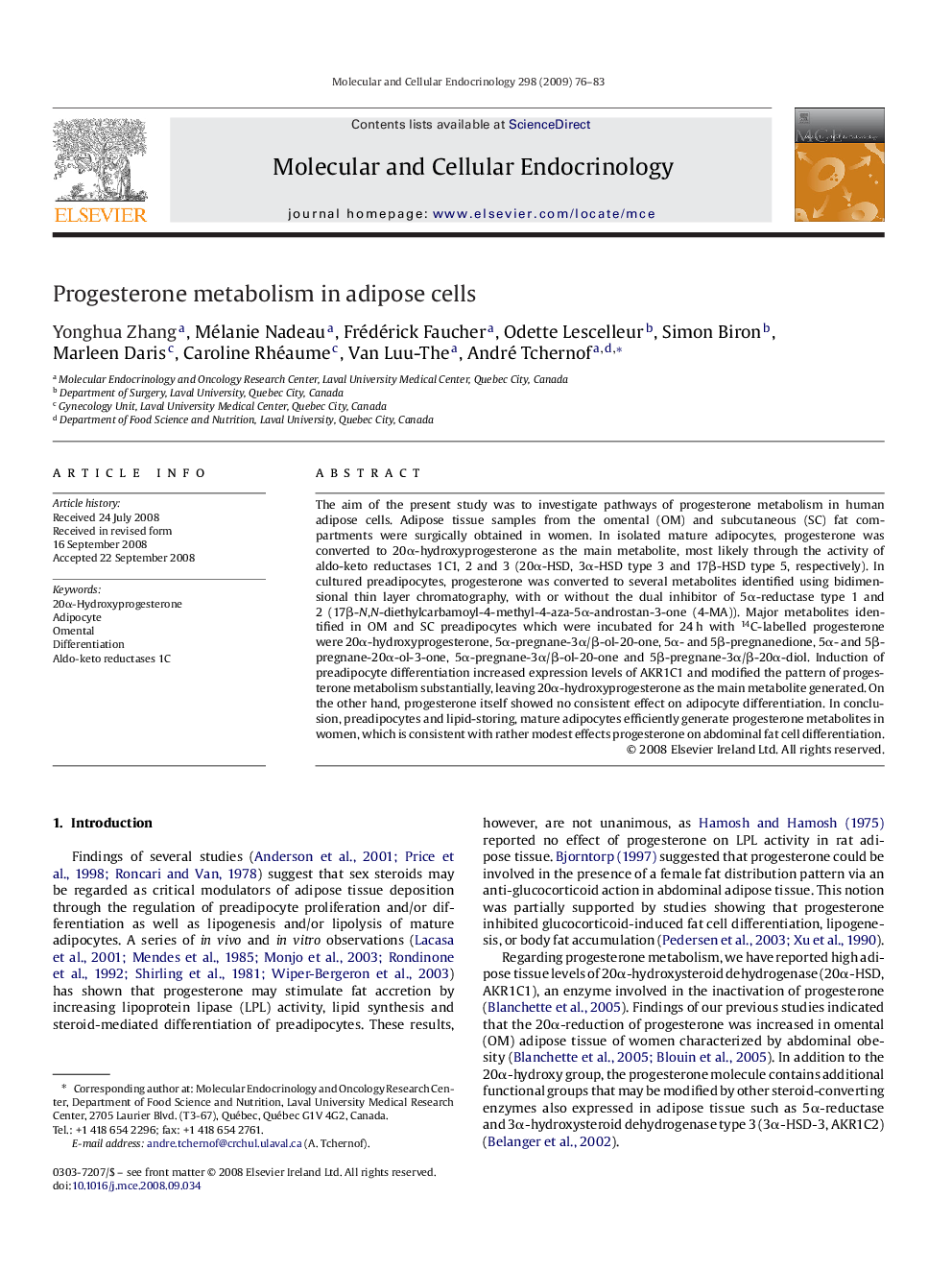| Article ID | Journal | Published Year | Pages | File Type |
|---|---|---|---|---|
| 2197563 | Molecular and Cellular Endocrinology | 2009 | 8 Pages |
The aim of the present study was to investigate pathways of progesterone metabolism in human adipose cells. Adipose tissue samples from the omental (OM) and subcutaneous (SC) fat compartments were surgically obtained in women. In isolated mature adipocytes, progesterone was converted to 20α-hydroxyprogesterone as the main metabolite, most likely through the activity of aldo-keto reductases 1C1, 2 and 3 (20α-HSD, 3α-HSD type 3 and 17β-HSD type 5, respectively). In cultured preadipocytes, progesterone was converted to several metabolites identified using bidimensional thin layer chromatography, with or without the dual inhibitor of 5α-reductase type 1 and 2 (17β-N,N-diethylcarbamoyl-4-methyl-4-aza-5α-androstan-3-one (4-MA)). Major metabolites identified in OM and SC preadipocytes which were incubated for 24 h with 14C-labelled progesterone were 20α-hydroxyprogesterone, 5α-pregnane-3α/β-ol-20-one, 5α- and 5β-pregnanedione, 5α- and 5β-pregnane-20α-ol-3-one, 5α-pregnane-3α/β-ol-20-one and 5β-pregnane-3α/β-20α-diol. Induction of preadipocyte differentiation increased expression levels of AKR1C1 and modified the pattern of progesterone metabolism substantially, leaving 20α-hydroxyprogesterone as the main metabolite generated. On the other hand, progesterone itself showed no consistent effect on adipocyte differentiation. In conclusion, preadipocytes and lipid-storing, mature adipocytes efficiently generate progesterone metabolites in women, which is consistent with rather modest effects progesterone on abdominal fat cell differentiation.
